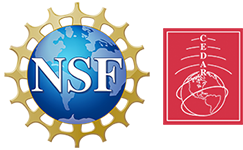Utilisation of aircraft for calibration of the ICEBEAR radar
The high resolution ICEBEAR (Ionospheric Continuous-wave E-region Bistatic Experimental Auroral Radar) is a low-elevation radar primarily designed to observe E-region irregularities and meteor trail plasma. Having accurate altitude radar observations is critical for a better physical understanding of the height dependence of the plasma processes associated with these irregularities and meteor trails. ICEBEAR utilizes interferometric processing to precisely locate echoes within a wide field-of-view. The interferometric processing is heavily dependent on the phase of the received signal on 10 independent receiving antenna paths, meaning that phase calibration of the radar receiver antenna array is of utmost importance for confident measurements. In addition to observing E-region irregularities and meteor trails, ICEBEAR regularly receives echoes scattered from aircraft. The location of the aircraft are known precisely via independent means. In this talk, I will explain how I utilize the aircraft echoes to perform high-quality ICEBEAR receiver phase calibrations, ensuring the accuracy of ICEBEAR measurements for enhanced understanding of plasma processes in the ionosphere.
